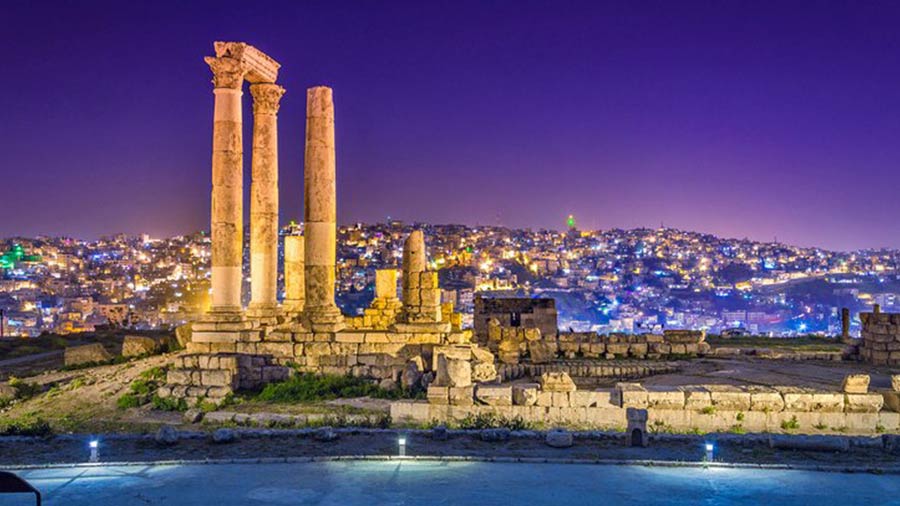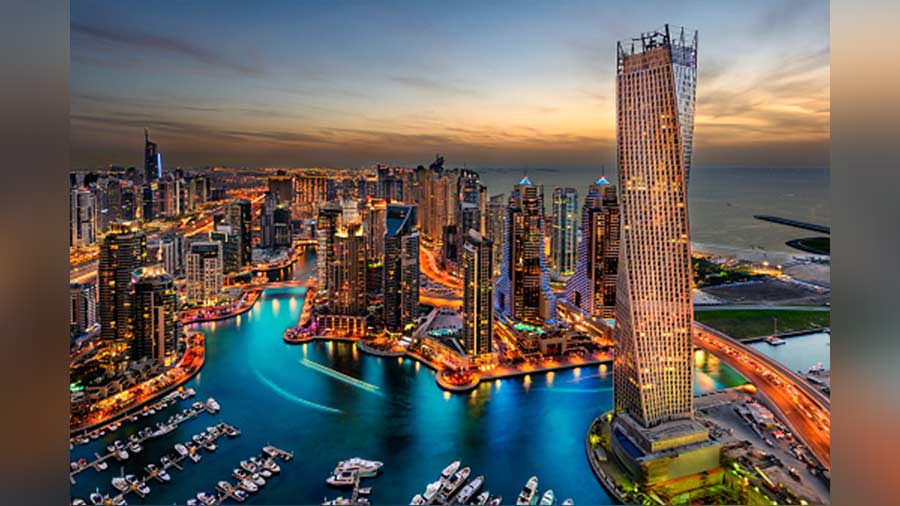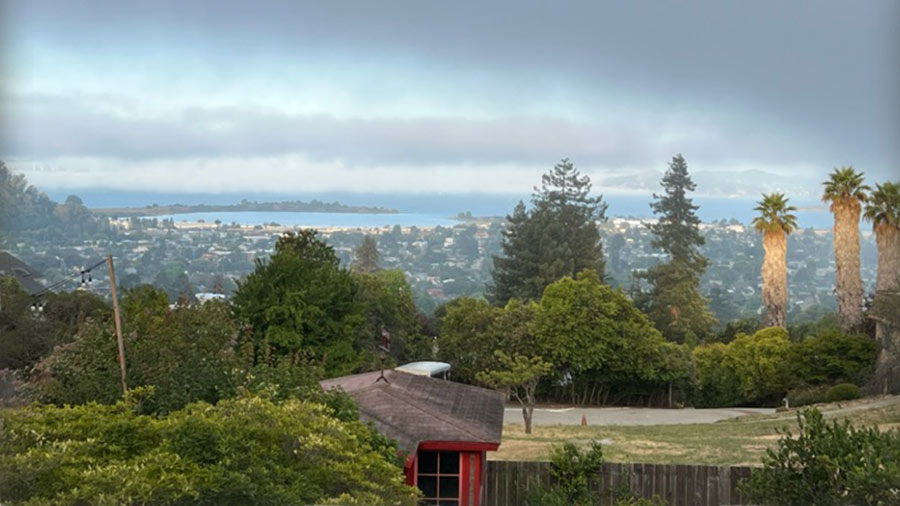Jordan often flies under the tourist radar but this beautiful Hashemite kingdom is big on hospitality, ancient history and culture and numerous UNESCO World Heritage sites. It is important to view Jordan beyond the regional conflict that often overshadows its many positives. In reality, it is peaceful, safe and a destination not to be missed.
Amman, the capital of Jordan, is diverse, inclusive and culturally rich. Its rich architecture, music, art and food make it a unique find in the region. Make Amman your base and explore Jordan’s dramatic landscapes, the desert, historical ruins and the Dead Sea.
Wadi Rum: A wonder in Lawrence land

Wadi Rum was declared a protected area in 1998 to preserve the unique desert landscape Niloy Nag
Wadi Rum is where the mountains and desert make poetry. Situated in the south of Jordan (almost 250km south of Amman), it is a protected area covering roughly 720 sq km of dramatic desert wilderness. The Wadi is dotted with sandstone and granite rock formations, which take on various shapes, and many of these still bear ancient scriptures and drawings that have endured in the desert over the millennia.
To preserve the unique desert landscape, Wadi Rum was declared a protected area in 1998. The Arab Bedouins, who have been living here for thousands of years, braving its harsh environment as hunters, farmers and traders, are largely responsible for developing Wadi Rum as a tourist destination. Interestingly, Wadi Rum finds a mention in T.E. Lawrence’s book Seven Pillars of Wisdom, a title apparently inspired by one of Rum’s dramatic mountains. The exploits of Lawrence, who was based in this region during the great Arab revolt of 1916-18, have become part of the local folklore. The landscape with all its immensity, colour and awe-inspiring shapes has several sites of interest.
Seven pillars of wisdom, sunsets and ‘mansaf’
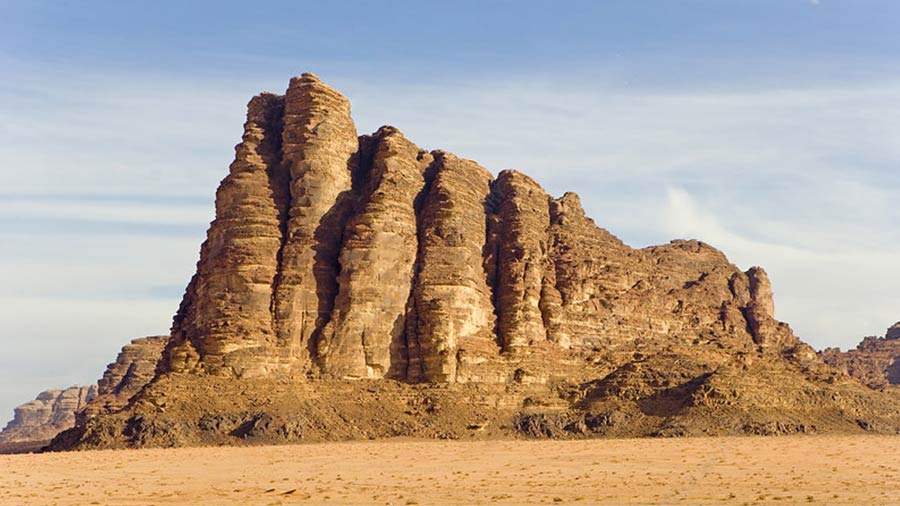
The famous seven pillars of wisdom in Wadi Rum Unsplash
To begin with, you must see Lawrence’s seven pillars of wisdom. The seven rock structures, which inspired Lawrence to pen his adventures in this region, look haunting in the evening light. Dark, resolute and determined, they bring to mind the enigmatic characters of Lawrence – part legend, part myth. There is also Lawrence’s spring with attractive rock inscriptions on nearby rocks. Do not miss the many sunset sites in the desert where you get the most breathtaking views of Wadi Rum as the sun sinks below the horizon.
From luxury tents to Bedouin overnight camps, there are several options to spend the night under the stars. If you prefer glamping in the wilderness, you can have your own private bubble tent in the middle of the desert with a bedroom, private bathroom and seating area, all equipped with adequate privacy.
For those of you who would like to get a feel of traditional Bedouin life, taste the mansaf – Jordan’s national dish, made with lamb and cooked in a yogurt sauce and served with rice. As you feast, you can also enjoy some storytelling, as there are some Bedouin campsites that give you a flavour of that as well.
Petra: Romancing the ruins
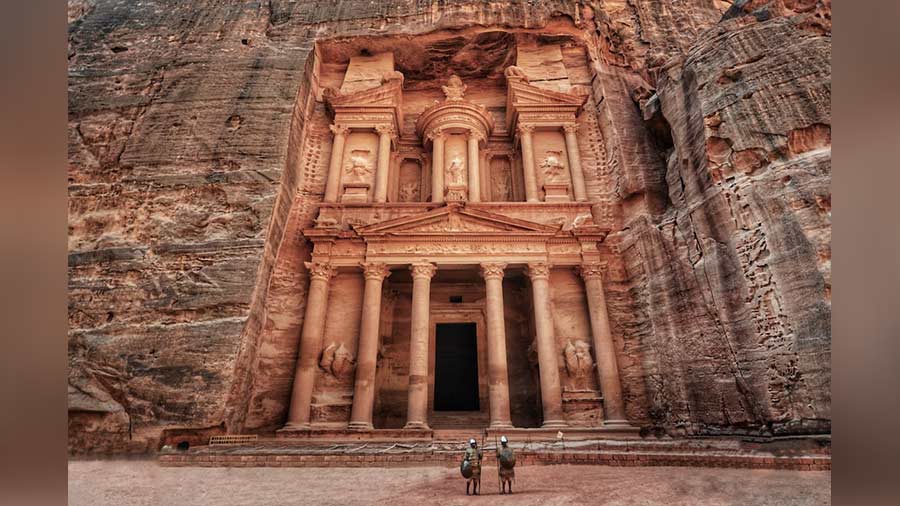
Petra was added to the list of the world’s New Seven Wonders in 2007 Unsplash
Petra, the city of ancient Nabataea, is located in south Jordan. One of the new Seven Wonders of the World, it is also one of the most spectacular sites in the Middle East, drawing travellers and explorers from all over the world. Recent excavations have added to our knowledge of this historical site, even though more than half of this city is still to be uncovered.
The Nabataeans, who occupied Petra around 312 BC, were in the caravan trade and lavished on to the city all the wealth they possessed. Visitors can enter Petra by foot, horseback or on a donkey, but walking is the best way to see the kingdom.
As you walk through Petra, you will come across caves and burial chambers, water channels and reservoirs, cultic installations, art gates and cobbled streets until you reach the Siq, the secret entrance that leads to the El Khazneh, or the ancient treasure house of the Nabataeans.
The majestic El Khazneh is definitely the masterwork of Petra – six enormous Corinthian pillars supporting a Roman pediment. At the very top sits an urn, with statues of Nabataean goddesses etched on the walls. Legend has it that this was used by the caravan traders to hide their treasures, but in practice it seems to have been both a temple and a tomb. A few blocks from the El Khazneh is a 4,000-seat open theatre.
For the more adventurous, there is “Petra by Night” – a light show in Petra after dark. Tickets for this have to be purchased separately and are not included with the entrance ticket. The “Petra by Night” experience occurs three times a week, between 8.30pm and 10.30pm on Mondays, Wednesdays and Thursdays. On such a candlelit evening, there are no clip-clops of shoed horses carrying passengers on carriages, no donkeys braying and no tour guides with groups of tourists taking in the secrets of the Siq. You will instead get to hear select melodies on a traditional flute – the rebab – and a story of Petra. You will love the silence of the Siq and the magical feeling of walking down its winding path.
Jerash: The relic city
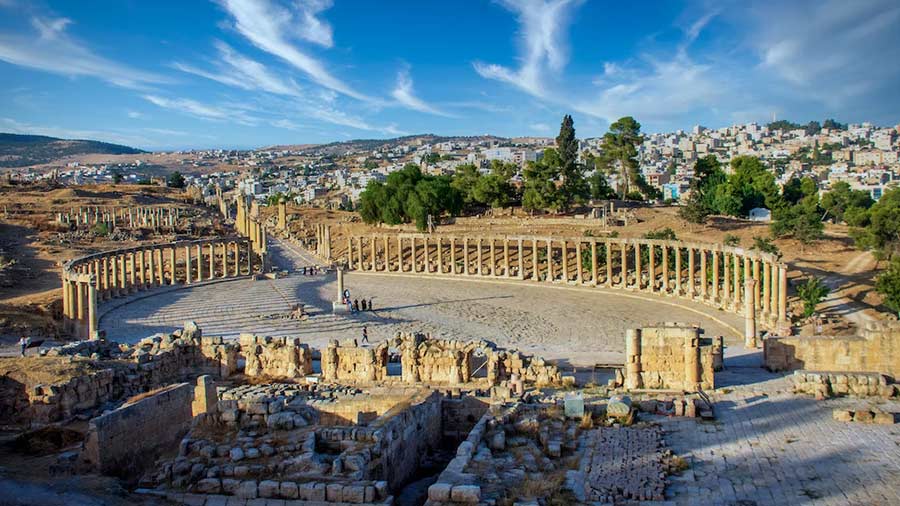
Jerash is one of the most important trading hubs in Jordan Unsplash
Less than an hour’s drive from Amman lies Jerash, famous for its Roman ruins. Over the centuries, Jerash grew into an important trading hub. Its ruins are its main draw and you can go on a day tour from Amman to see the famous Hadrian’s Arch (built to celebrate Emperor Hadrian’s visit; impressive even many centuries later), the Hippodrome (one of the biggest sites in Jerash that seated around 15,000 people and was used for horse races and other sports) and the Temple of Artemis (valued for its high Corinthian columns – 11 out of the 12 original columns can still be seen).
Dead Sea: That muddy feeling
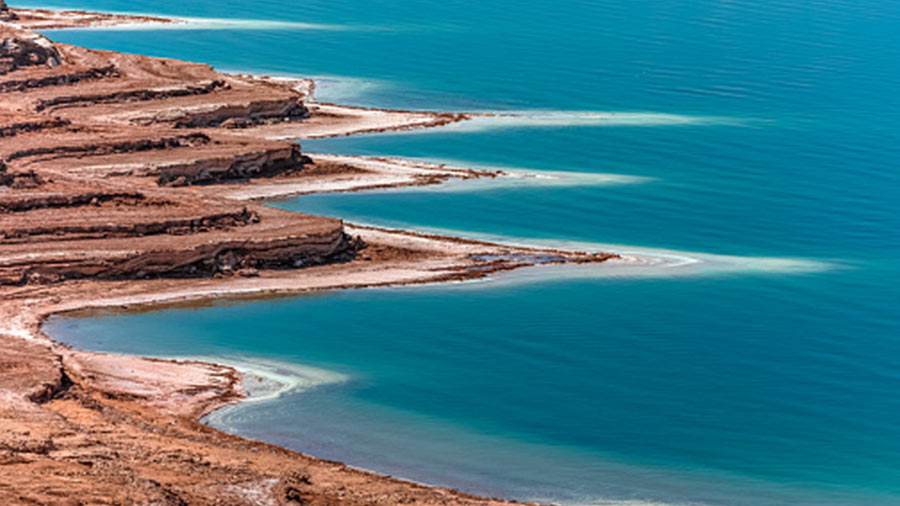
While you can opt to float in the Dead Sea, do not dip your face in its waters, warns Niloy Unsplash
At first glance, the Dead Sea looks like a quiet lake, the still waters tempting you to take a dip. Standing on its muddy shores, it is difficult to believe that the saltiest body of water on earth is slowly shrinking towards extinction. Aside from being the lowest point on earth, the Dead Sea’s main draw are its curative properties, recognised since the days of Herod the Great. Promoted as a destination for beauty, health and wellbeing, this makes for a delightful day trip from Jordan via Mount Nebo for some rest and relaxation. Several resorts and spas have mushroomed along the Jordanian shores of the Dead Sea and it is easy to while away a day as you enjoy the sun and the mud baths, affusion showers and aroma therapy sessions. The black mud of the Dead Sea contains health-giving minerals and is known for curing arthritis.Once caked in mud, you can float in the sea – just make sure you do not dip your face, as it is extremely salty and can burn your eyes and mouth. Get out and grab a shower to get the mud out and give yourself an oily rub-down afterwards. Your skin will feel as smooth as silk.
From the desert wilderness to the ruins of the past, from city charms to floating in the Dead Sea, Jordan is the pièce de résistance in the Arabian desert. Make it part of your Middle East bucket list right away.
Niloy Nag is the Founder and Managing Partner of Flying Squirrel Holidays (www.flyingsquirrelholidays.com), based out of Kolkata and Dubai
